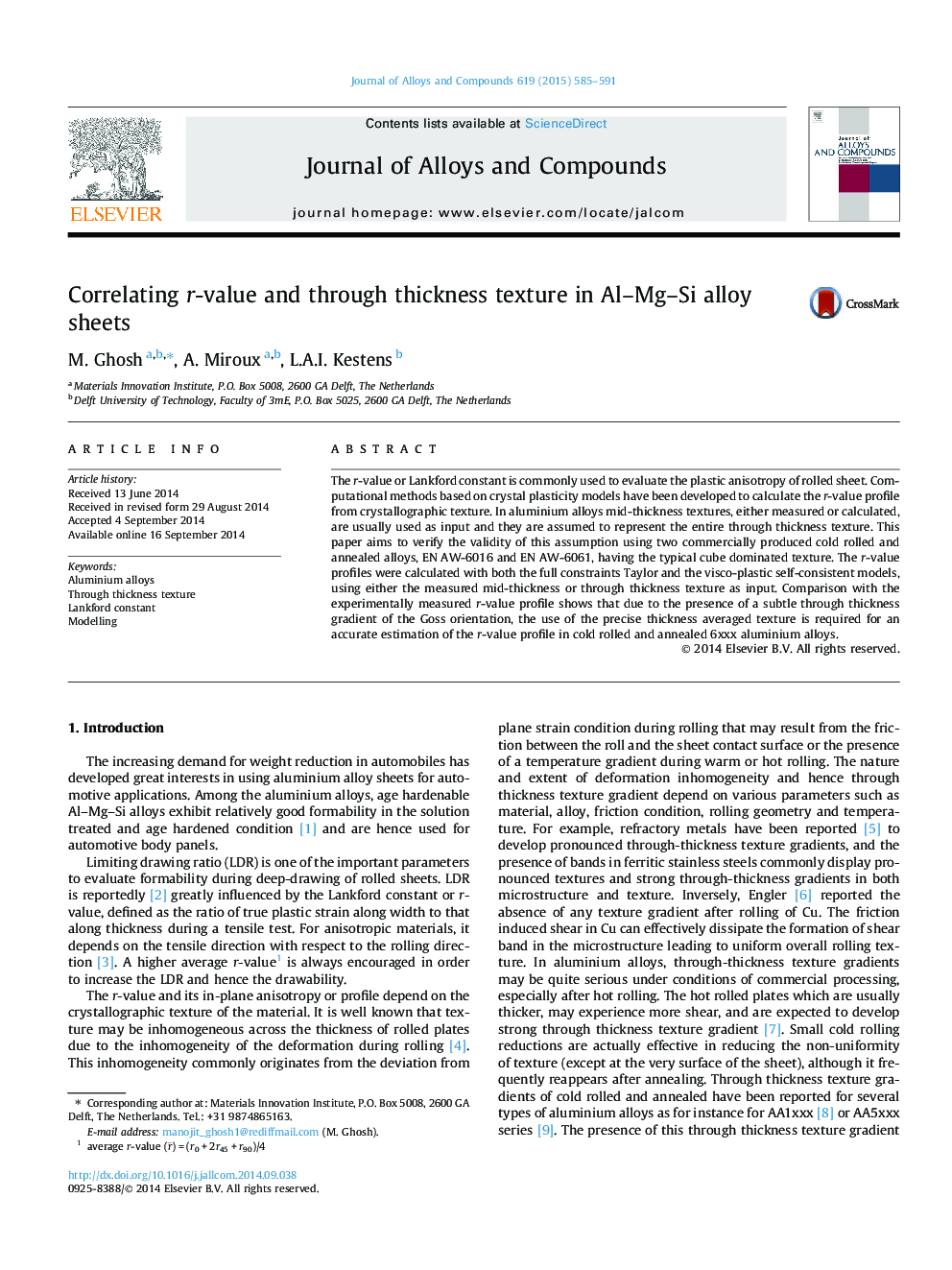| Article ID | Journal | Published Year | Pages | File Type |
|---|---|---|---|---|
| 8000678 | Journal of Alloys and Compounds | 2015 | 7 Pages |
Abstract
The r-value or Lankford constant is commonly used to evaluate the plastic anisotropy of rolled sheet. Computational methods based on crystal plasticity models have been developed to calculate the r-value profile from crystallographic texture. In aluminium alloys mid-thickness textures, either measured or calculated, are usually used as input and they are assumed to represent the entire through thickness texture. This paper aims to verify the validity of this assumption using two commercially produced cold rolled and annealed alloys, EN AW-6016 and EN AW-6061, having the typical cube dominated texture. The r-value profiles were calculated with both the full constraints Taylor and the visco-plastic self-consistent models, using either the measured mid-thickness or through thickness texture as input. Comparison with the experimentally measured r-value profile shows that due to the presence of a subtle through thickness gradient of the Goss orientation, the use of the precise thickness averaged texture is required for an accurate estimation of the r-value profile in cold rolled and annealed 6xxx aluminium alloys.
Keywords
Related Topics
Physical Sciences and Engineering
Materials Science
Metals and Alloys
Authors
M. Ghosh, A. Miroux, L.A.I. Kestens,
